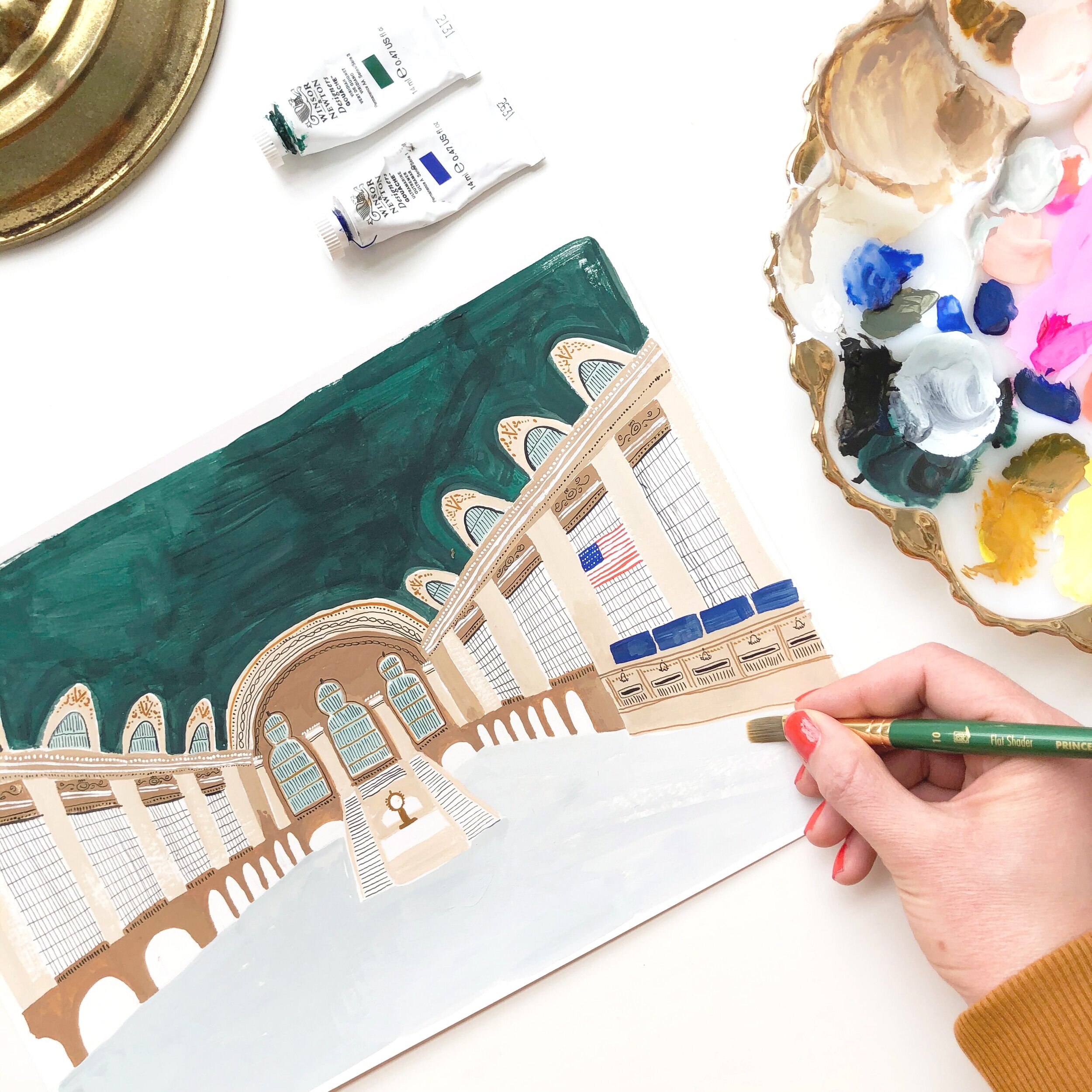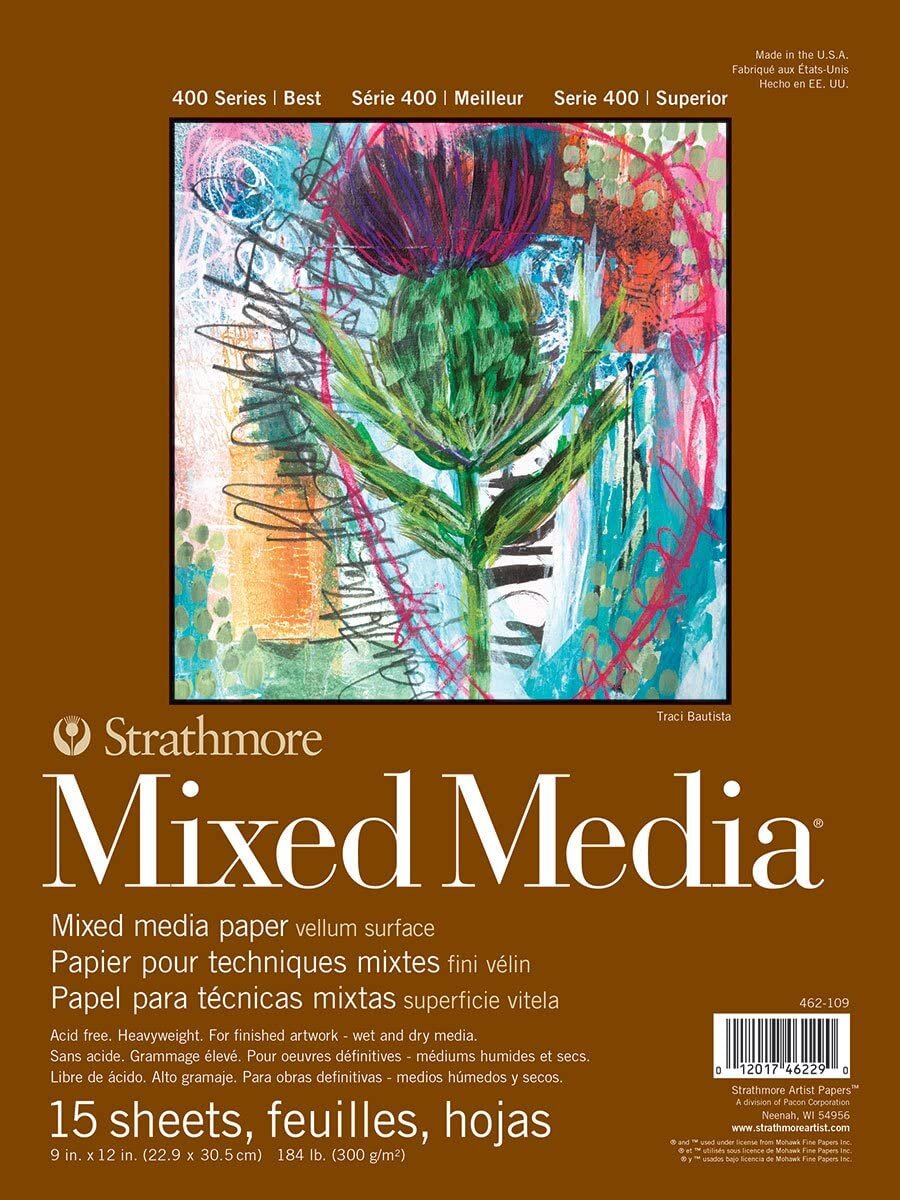Paper Basics for Gouache
“Gouache paper” doesn’t exist, so you have two options when it comes to paper. You can use a watercolor paper, or a mixed media paper. By using either, you can ensure your paper doesn’t wave when applying lots of water with your gouache.
While a watercolor paper is the most obvious choice, mixed media paper can be great too - especially if you’re doing exactly what it was intended for, mixing medias. Since I like to use pens and pencils over my watercolors sometimes, this paper can be appealing. On mixed media paper, you can use pretty much anything and the paper will still be intact.
In 2019, I did a big paper test. I splurged and purchased all the watercolor and mixed media papers I could find from every brand. I looked at ratings, and tried to get the ones everyone loved.
As I was testing out my papers, I found two things to be deal breakers for me - when the paper had too rough of a surface or when the paper wasn’t a true white.
If a paper had too rough of a surface, I found I needed to use a lot more gouache and it was difficult to paint straight lines and detail work. The paint just didn’t apply as easily. It made painting feel more difficult. This was the case with a lot of the watercolor papers I purchased. Because you don’t apply gouache the same way was watercolor, I found that a lot of them didn’t suit the medium as well as I’d hoped. Even the papers that claimed to have a smooth surface (something that’s usually noted in the product description), just didn’t have as smooth of a surface as I would’ve liked.
A paper being too off-white is my own personal pet peeve. My brain doesn’t like adding colors to an already tinted surface. I also don’t find editing as easy with these papers, because I’m always going for a pure white background behind my art. This is a must when creating art prints.
Oddly enough, my paper test was completely pointless. I ended up liking Strathmore Mixed Media Paper best - the same old paper I’d been using for years. It’s thick, smooth, and a bright white. Oddly enough, this paper was so much cheaper than a lot of the watercolor papers I’d purchased.
Another benefit to this paper is that it comes in a pad versus a sheet. A lot of watercolor papers come in large sheets, and you have to trim it down before using. I know a sheet tends to equal quality and craftsmanship in the art world, but I like the portability of a good old pad of paper. If I had to choose a second favorite, which did happen to be a sheet, it was the Winsor & Newton Hot Press Watercolor Paper, but I liked it much less than Strathmore Mixed Media Paper.
If you’re going to purchase a watercolor paper, and you do a lot of detail work in your paintings, you want to look for “hot press.” It’s the smoothest of all the watercolor papers. Next smoothest is “cold press.” The most bumpy surface is “rough press.”
Some papers I didn’t like for gouache were Arches Watercolor Paper (a fan favorite), Bee Paper Aquabee Watercolor Paper, and Canson Mixed Media Paper. I tried a whole range of watercolors with “rough press'“ in the product description and those were a no go.
When it comes to sketchbooks, you’re looking for the same traits in the paper. You want a watercolor or mixed media sketchbook. Anything that isn’t will leave your sketchbook wrinkly and destroyed in no time. The problem with sketchbooks is you just don’t get as many paper choices, especially when factoring in size and binding preferences. My favorite sketchbooks are the Moleskine Watercolor Sketchbooks. The paper is slightly more textured than my mixed media paper, and it’s slightly off-white, but it’s the best I’ve been able to find in a watercolor sketchbook. It also feels very quality, and I love the range of sizes they offer. My sketchbook pet peeve is bulky spiral metal binding. It get’s in the way of my hands working, and I hate how the paper can start to rip out of the book leaving a messy frayed edge. I prefer a black leather cover too, with an elastic band to hold the sketchbook shut - something Moleskine offers.
Take all this advice with a grain of salt. I think every artist needs to do their own paper tests. If you use less detailing in your work than I do, you might like a paper with a rougher surface. Or maybe you like the charm of an ivory paper. There’s a right paper for every artist, but hopefully this give you a great starting point.














Thanks for stopping by! I’m an illustrator & writer. I’ve been running my own creative business since 2015. My mission is to help artists find their unique creative voice, build positive habits, and do what they love for a living.